Replacing the Cabinetry in This Kitchen Only Cost $500
You’ll be surprised—and inspired!—by some of the cost-cutting ideas that went into the renovation of this kitchen in a mid-1800s Victorian home located in Kingston, New York. Principal designer Maryline Damour of design and build firm Damour Drake undertook the project from concept to completion with the goal of transforming the space utilizing a careful mix of high/low budget materials. The result offers so many examples of how to use a renovation budget wisely.
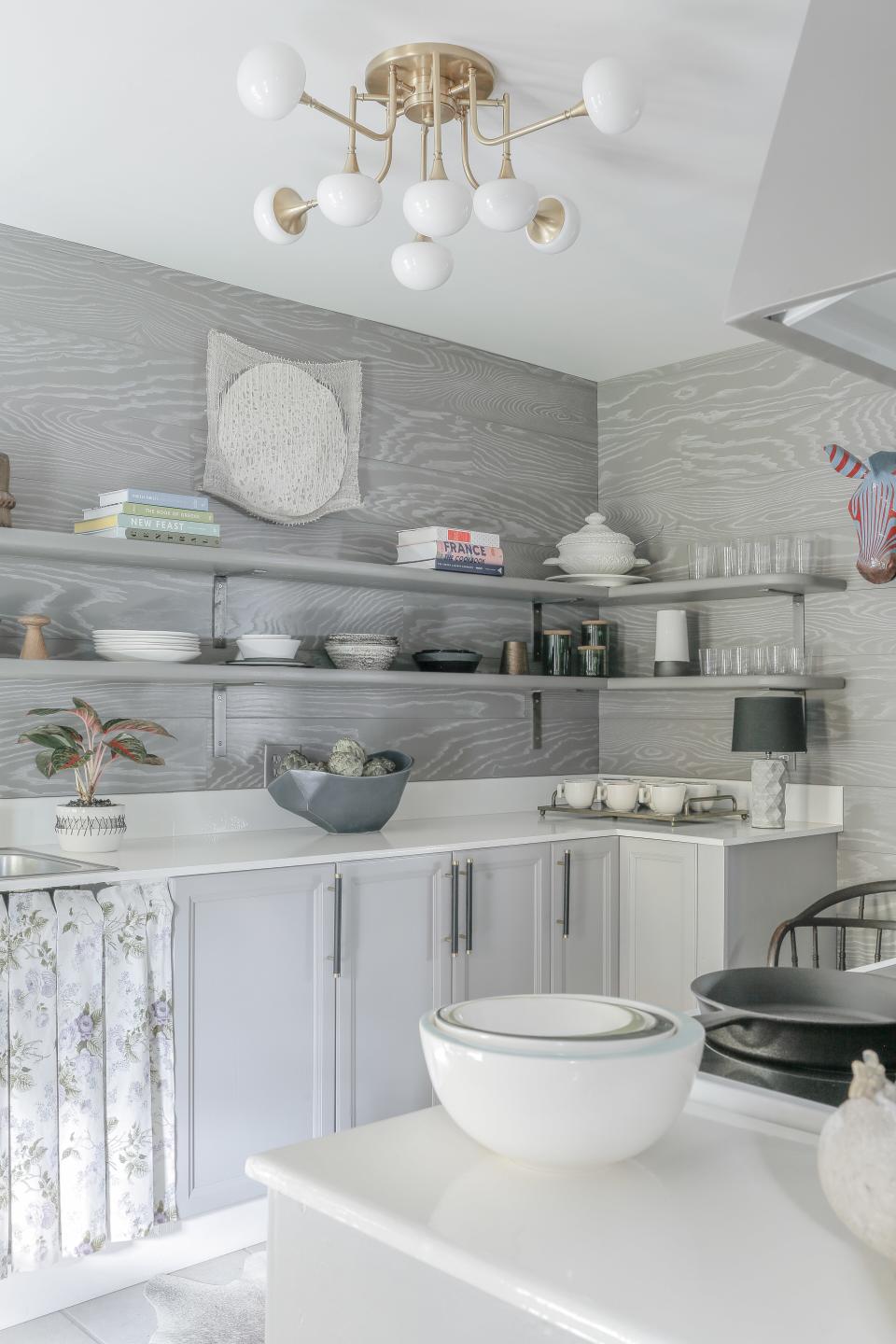
In terms of design, “the goal was an updated Victorian style kitchen,” Maryline explains. She wanted the kitchen to reflect modern aesthetics while referencing the architectural details of the era in which the home was built. In other words, Victorian but make it current.
After gutting the kitchen and reworking the floor plan to be more functional, Maryline sourced used cabinets from Big Reuse, rather than buying all new pieces. Another major save was the quartz countertops dupe constructed with $150 worth of materials from Home Depot. “Everyone thinks they’re Caesarstone,” Maryline says. Instead, they’re made from plywood painted bright white and coated in a thick layer of self-leveling epoxy resin poured on top.
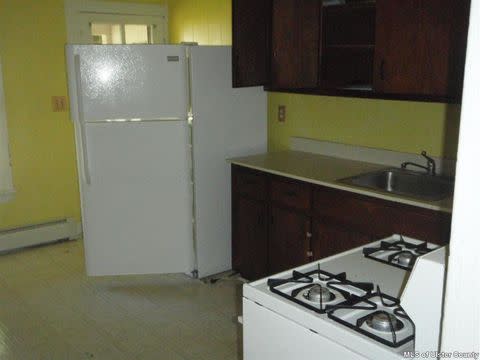
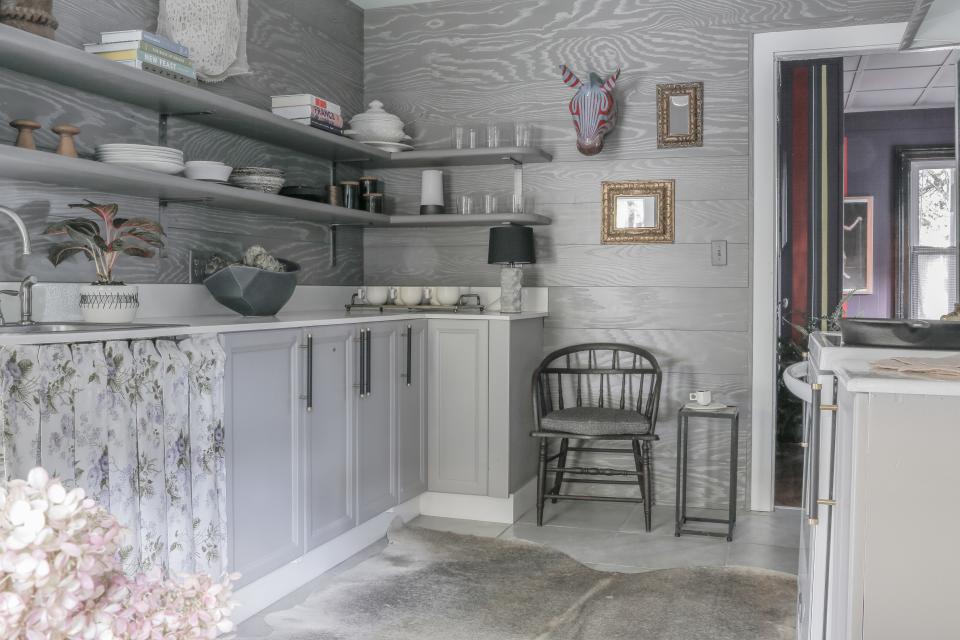
The warm gray and mauve color palette is a nod to the pink and purple paint colors typical in Victorian homes. I wanted to “dirty the palette up a bit, making it less sweet, and more sophisticated,” she says. Another traditional Victorian design detail, the kitchen sink apron, was embraced but reimagined, with tailored box pleats for a crisp look.
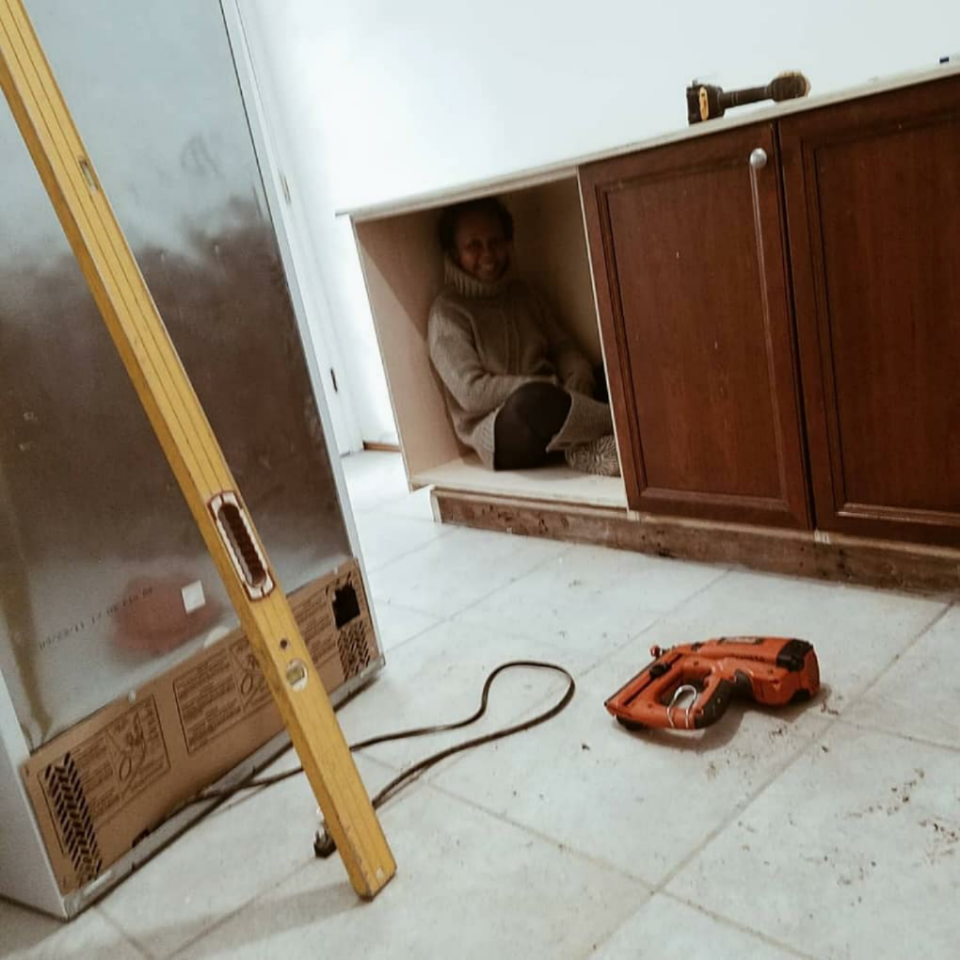
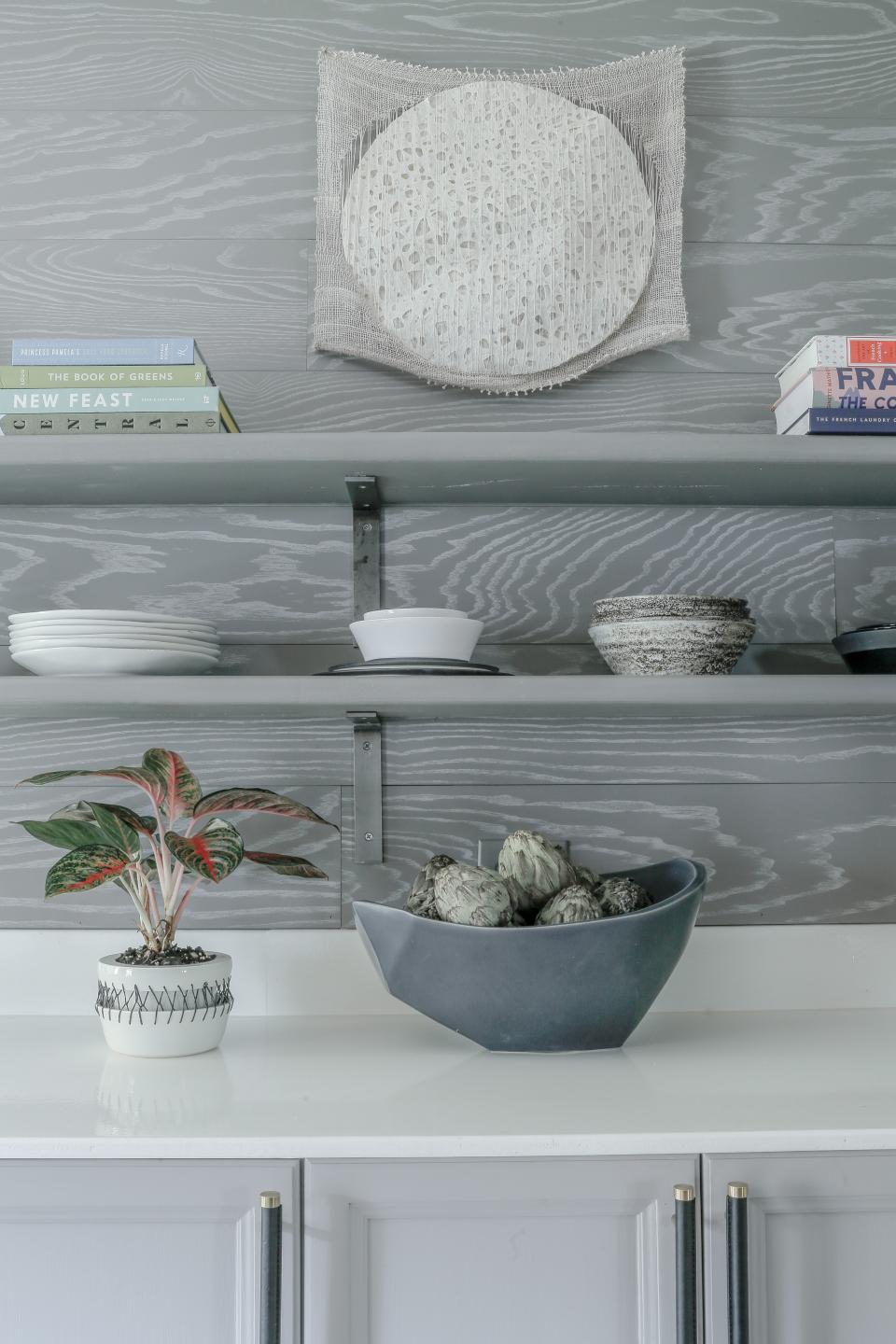
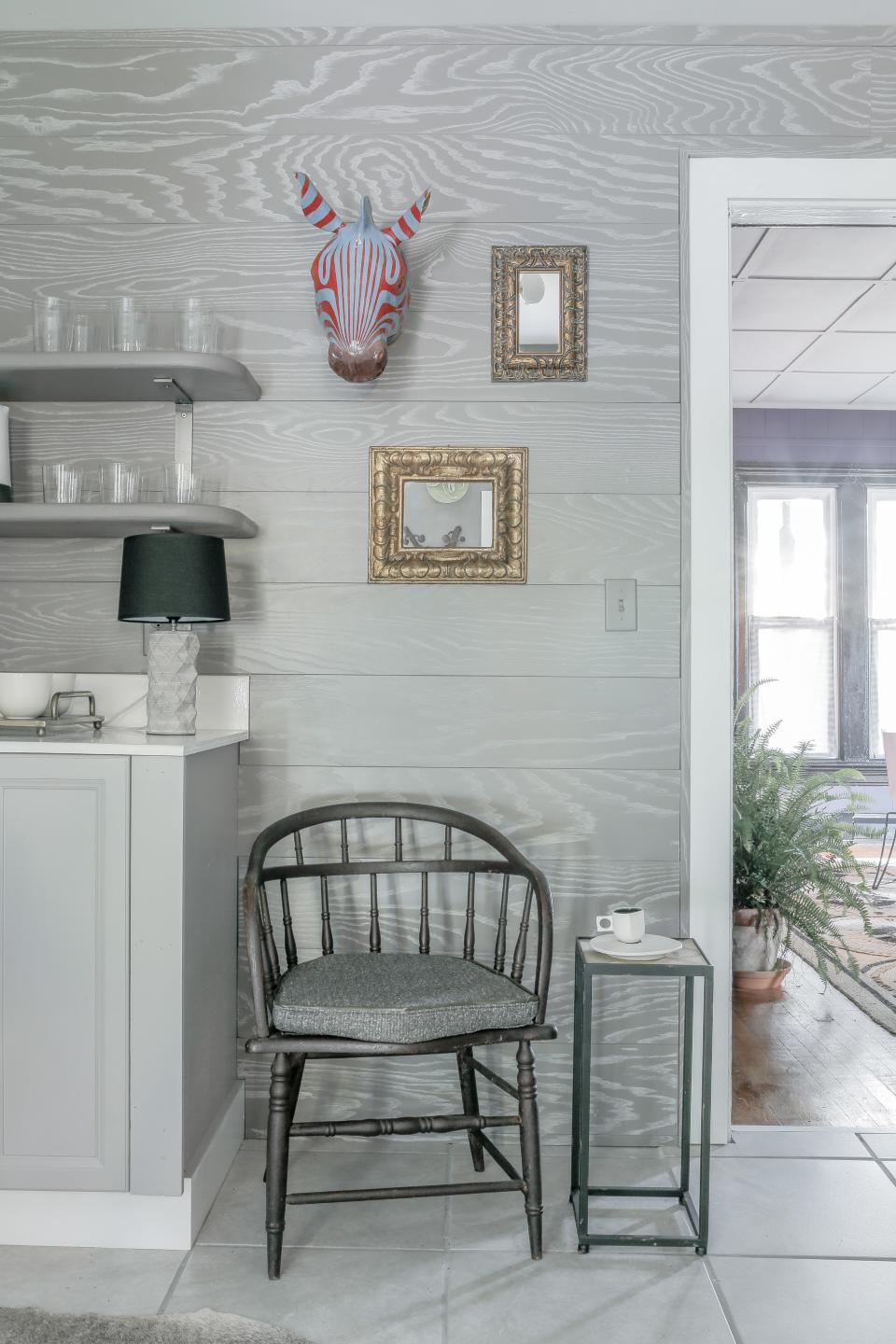
Saving on the cabinetry and countertops left more room in the budget for some luxe splurges like leather-encased hardware pulls, and a beautiful glam overhead light fixture. The showstopper, of course, is the wall-paneling treatment—a riff on traditional shiplap that elevates the kitchen to show house–level design.
“Shiplap is everywhere in design,” Maryline says. “I wanted to do something a little different.” When she learned about a furniture-making company pioneering a unique wood-treatment process that uses a custom two-color paint effect designed to highlight the grain, her wheels started turning. After approaching the Iowa-based company, Aronson Woodworks, about applying the color process to panels suitable for a wall installation, they agreed to collaborate on the proposal. The result achieved the look Maryline hoped for perfectly, adding texture and warmth with a cohesive sophistication.
Originally Appeared on Architectural Digest

